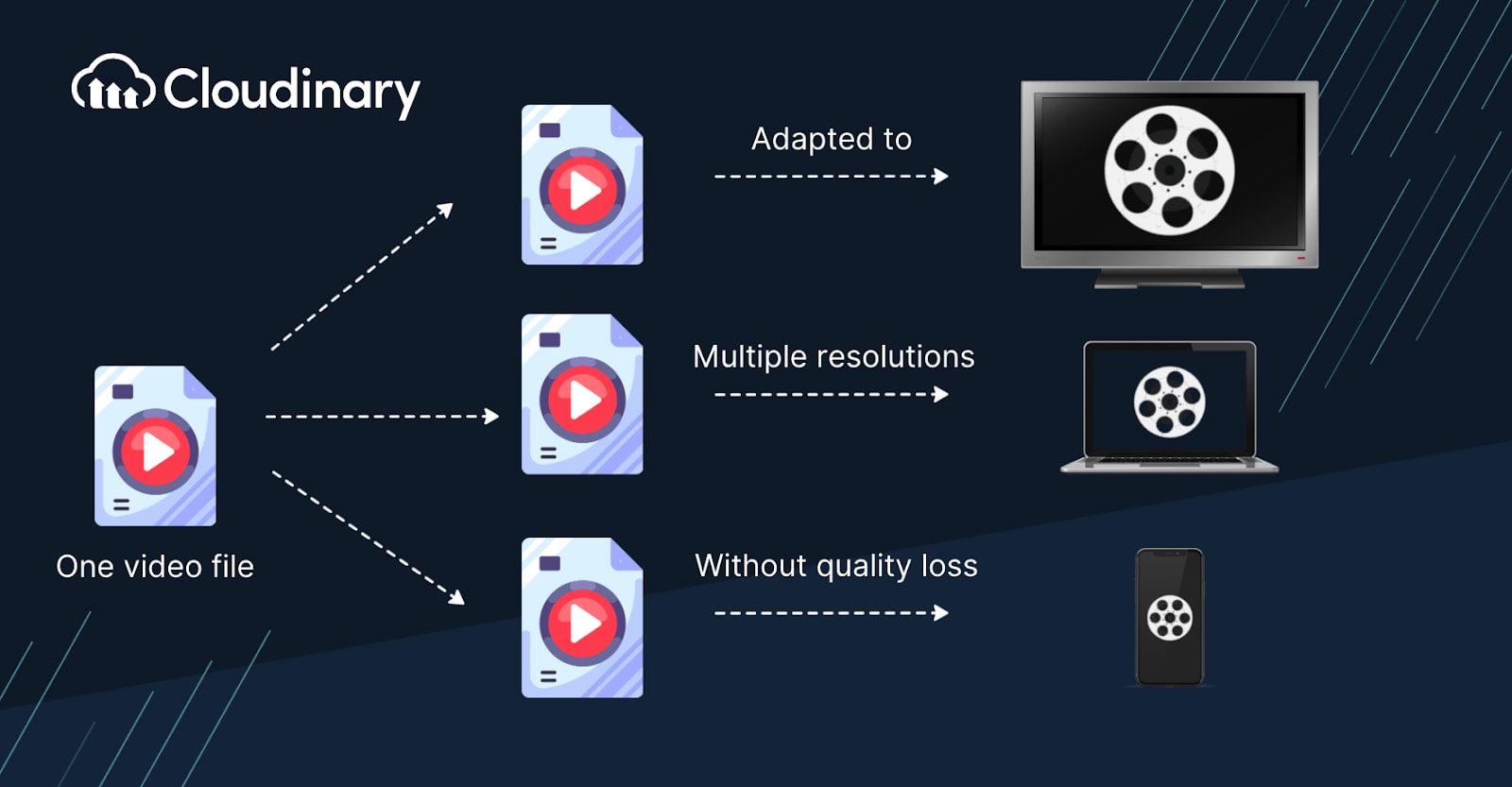
Adaptive bitrate streaming is the process of serving a video to a user based on the user’s internet connection. The goal is to ensure that each viewer receives a quality stream that plays smoothly and doesn’t buffer. ABR achieves this by dynamically adjusting the quality of the stream in real time to match available bandwidth and device capabilities, ensuring a smooth playback experience regardless of the viewer’s location or internet speed. Adaptive bitrate streaming can be applied to live and pre-recorded content. Still, it’s especially important for live streams because you don’t know what bandwidth conditions your viewers will be experiencing on any given day.
What is Adaptive Bitrate Streaming?
Adaptive bitrate streaming is a video streaming solution that adjusts the video quality to match the available bandwidth. It’s a way to reduce buffering and improve quality for viewers, but it also requires more work as a distributor. The process involves content preparation, where the video is encoded into multiple variants at different bit rates, frame sizes, and frame rates, enabling smooth transitions between quality levels. This ensures that the viewer always gets the best possible quality under their current network conditions.
How Adaptive Bitrate Streaming Works
As you might expect, the player determines the quality of the stream based on its bandwidth and other factors – like what device you’re using and where you are watching it. The player then adjusts its bitrate accordingly so that even if there are interruptions in connectivity or spikes in demand, viewers can still watch their shows without buffering issues.
Additionally, the ABR player continuously monitors network throughput, dynamically requesting a lower bitrate segment when network conditions deteriorate. This real-time monitoring ensures minimal buffering and optimal user experience.
To determine which stream should be played back by an adaptive bitrate player, it detects the user’s bandwidth and adjusts the quality as needed. The encoder will encode the file in multiple bit rates allowing the client to switch between different ones as needed.
This approach not only optimizes playback quality but also helps reduce startup delays, allowing videos to begin streaming more quickly and smoothly.
How Are Progressive Video Streaming and Adaptive Streaming Different?
Progressive streaming is a non-adaptive streaming technique. It allows you to watch the video as it downloads without interruption or buffering. For example, if you are watching a video on YouTube that has been encoded in 1080p HD quality and your internet connection speed is slow (generally less than 4 Mbps), progressive streaming will automatically switch the resolution of that video to 480p for better performance on your device.
Adaptive bitrate streaming is an advanced technique used by most major media platforms today, including Netflix and Amazon Prime Video. It allows users with fast connections (upwards of 15 Mbps) to get higher resolutions while those with slower connections get lower resolutions – all without buffering or interruptions!
Unlike progressive streaming, ABR leverages packaging protocols like HLS and MPEG-DASH to define multiple quality levels and enable seamless transitions between them. This flexibility makes ABR a preferred choice for both point-to-point and Over-the-Top (OTT) streaming services.
What Streaming Protocols Support Adaptive Bitrate Streaming?
There are three popular streaming protocols that support adaptive bitrate streaming:
- HLS (HTTP Live Streaming) is the most commonly used protocol for video distribution on mobile devices because it’s supported by all major browsers and devices. It supports a variety of bitrates but requires you to use a different URL for each variant.
- DASH (Dynamic Adaptive Streaming over HTTP) is newer than HLS and has recently gained popularity due to its ability to dynamically adapt playback quality based on network conditions or device capabilities. For example, if you’re watching from your phone over Wi-Fi with 4G LTE enabled, DASH will dynamically adjust between 480p and 1080p resolutions for uninterrupted playback.
- IIS Smooth Streaming is another popular option supported by Microsoft Silverlight and iOS devices. However, it only supports streaming up to 1080p quality at maximum.
Cloudinary and Adaptive Streaming
You can use Cloudinary’s dynamic delivery feature to automatically generate adaptive bitrate media files for your users in real-time. Dynamic delivery simplifies content preparation by encoding videos into multiple variants, enabling seamless integration with adaptive bitrate streaming protocols like HLS and DASH. Dynamic delivery also allows you to create an original, optimized image or video at any resolution and then automatically adapt it according to your viewer’s device, browser, and network conditions. If you don’t have a Cloudinary account, you can sign up for free today!
See the documentation around Video Transformations and Cloudinary’s Adaptive Bitrate Streaming.
Additional Resources You May Find Useful:


